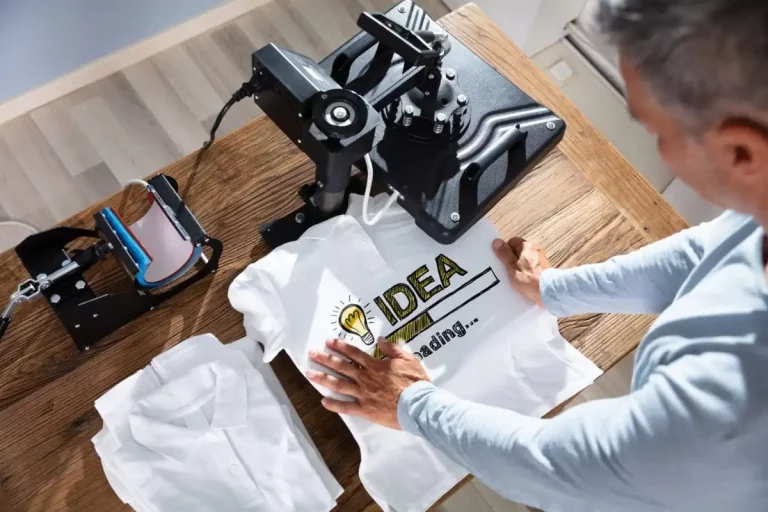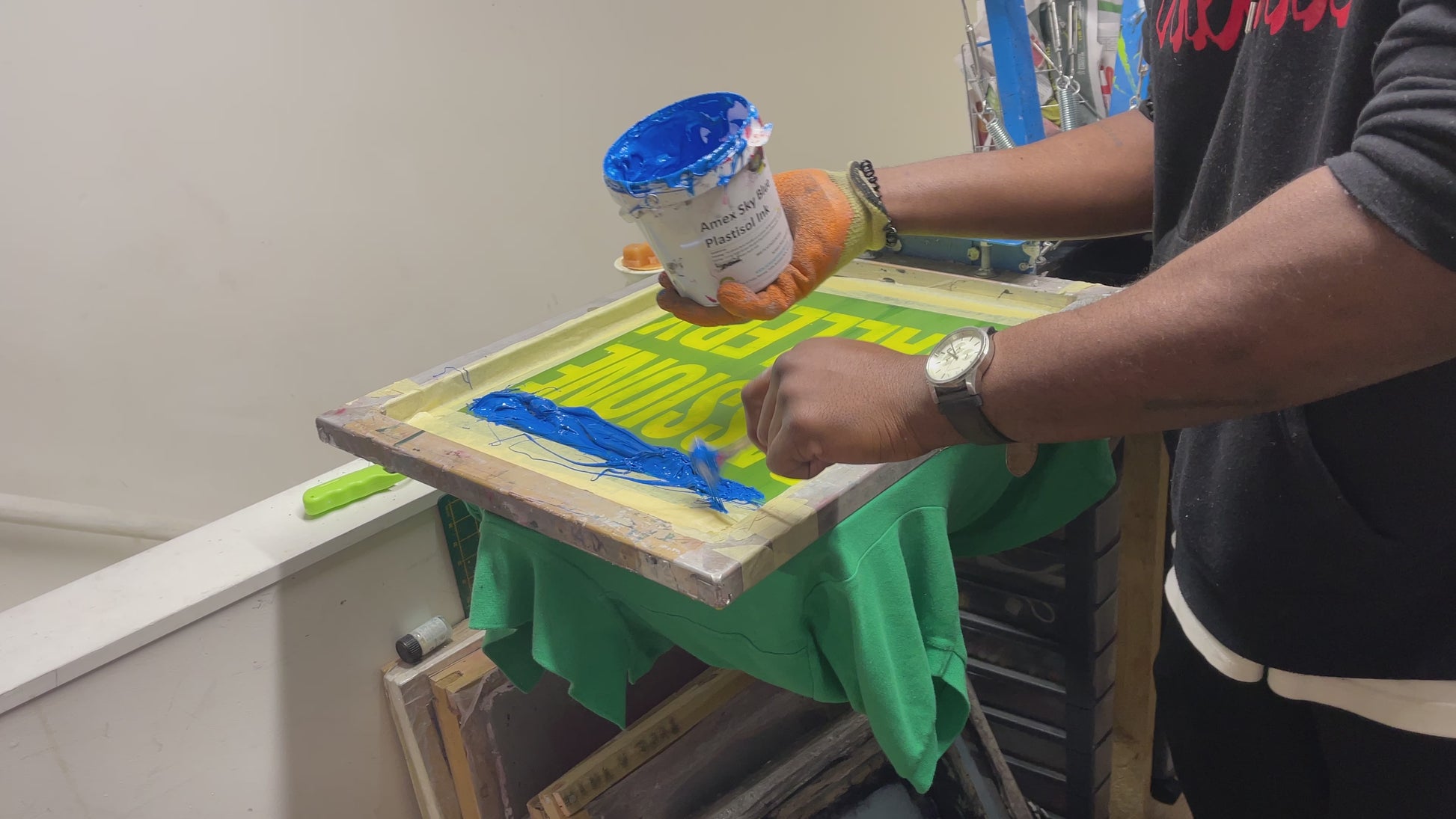Screen Printing Uncovered: Every Little Thing You Need to Find Out About Tee Shirt and Garment Printing Strategies
If you have actually ever questioned exactly how those vibrant styles end up on your preferred tee shirts, you're in the ideal place. Screen printing is a remarkable method that integrates art with method, providing endless opportunities for imagination. Understanding the fundamentals, from equipment to ink choices, can substantially influence your outcomes. Ready to check out the essential elements that make screen printing an art form? Allow's reveal the details that can elevate your jobs.
The Essentials of Screen Printing: Just How It Functions
When you plunge right into display printing, you'll uncover it's both a scientific research and an art. At its core, display printing entails developing a stencil, or screen, that allows ink to pass with just in particular areas.
Following, you'll mix your inks and prepare your printing surface area. Placement the display over the material, after that utilize a squeegee to press ink with the display onto the garment. This process requires precision, as you desire clear, vibrant prints. After printing, you'll heal the ink with warm, ensuring it abides by the material and lasts with cleans. Each action is crucial, and grasping them will boost your screen printing skills, changing easy garments into distinct, expressive items.
Sorts Of Screen Printing Strategies
As soon as you understand the essentials of screen printing, it's time to explore the various techniques that can elevate your styles. One prominent method is conventional display printing, where ink is pushed with a stenciled display.
Another choice is plastisol printing, recognized for its resilience and vivid colors, making it a favorite for several brand names. Experiment with halftone printing to create gradient effects and detailed layouts.
Essential Devices for Screen Printing
To accomplish stunning outcomes in screen printing, having the best tools is basic. You'll require a tough screen printing structure, which holds the mesh that moves your style onto the garment. Next off, invest in top notch squeegees; these are crucial for using ink equally throughout the screen.
Picking the Right Inks and Products
When choosing inks and materials for screen printing, you need to consider the kind of ink that works finest for your job. Believe regarding material compatibility to guarantee your layouts look terrific and last lengthy. Likewise, discover environmentally friendly ink options to make your printing process much more lasting.
Kinds Of Display Inks
Picking the right display ink is crucial for accomplishing dynamic, sturdy prints that satisfy your job's needs. There are several kinds of screen inks to analyze. Specialized inks, such as glow-in-the-dark or metal, can add special effects to your designs.

Textile Compatibility Considerations
Recognizing textile compatibility is essential for attaining high-grade display prints, particularly given that different materials respond distinctly to various inks. When choosing inks, take into consideration the textile kind-- cotton, polyester, or blends. For cotton, water-based inks work well, offering soft qualities and breathability. Polyester, on the other hand, commonly needs plastisol inks for much better adhesion and dynamic shades. You may need to utilize a mix of both types if you're publishing on blends. Constantly evaluate your inks on sample textile to ensure they stick effectively and keep color honesty. Additionally, keep in mind that textile weight and texture can impact the final end result, so choosing the right ink and material combo is crucial for your job's success.
Eco-Friendly Ink Options
Environmentally friendly inks are ending up being a preferred option for display printers who wish to decrease their ecological influence while keeping quality. When picking inks, take into consideration water-based inks, which are much less harmful and simpler to clean up contrasted to standard solvents. These inks bond well with materials, supplying vivid results without hazardous chemicals. You could additionally explore eco-solvent inks that use less unstable natural substances (VOCs), making them a more secure choice for both your health and wellness and the world.
Furthermore, try to find inks made from renewable resources, such as soy or vegetable-based choices. By choosing the best inks and products, you'll not just create spectacular layouts but likewise add to a more sustainable printing process. Make the switch, and your prints will certainly reflect your commitment to the environment!
Preparing Your Style for Display Printing

File Style Needs
To assure your layout looks vivid and sharp on textile, you'll require to pay close focus to file format requirements for screen printing. Make sure your style has a transparent history to prevent undesirable white edges on your prints. Maintain shade settings in mind; CMYK is standard for display printing, so transform your RGB makes accordingly.
Shade Splitting Up Methods
Color splitting up is a vital action in preparing your layout for screen printing, and grasping it can considerably enhance your print high quality. You'll need to break your style right into private shades, as each shade needs a separate screen during printing. Start by recognizing all the shades in your design and develop layers each. You can make use of software application like Adobe Photoshop or Illustrator to isolate and different shades efficiently. Be certain to save each layer as a different file, generally in a layout like TIFF or PSD. This precision not only ensures accurate color representation but additionally streamlines the printing process. By taking note of color separation, you'll accomplish expert and vivid results in your screen-printed garments.
Resolution and Dimension
Attaining the very best lead to display printing begins with assuring your design has the ideal resolution and size. Preferably, your art work ought to go to least 300 DPI (dots per inch) for sharp, clear prints. Your last item could look unprofessional and pixelated. if you utilize reduced resolution.
When it involves dimension, consider the dimensions of your print area. Style your artwork to match the last print dimension, preferably producing it in the actual dimensions you'll be printing. This means, you'll prevent any type of unforeseen scaling issues.
Constantly check your style in both vector and raster styles. Vector graphics can be scaled without shedding top quality, making them ideal for screen printing. Preparing correctly will guarantee your layout looks impressive on every garment!
Step-by-Step Display Printing Refine
Screen printing is a dynamic process that enables you to create dynamic layouts on various surface areas. To get begun, you'll need a display, emulsion, and t-shirt printing your picked ink.
Put ink onto the display and make use of a squeegee to push the ink via the pattern onto the material. Raise the screen carefully and allow the print dry. You have actually effectively display published your layout.
Tips for Effective Display Printing Projects
While you're diving right into your display printing projects, remember that preparation is crucial to success. Start by gathering all your materials-- inks, garments, squeegees, and displays. A clean work area helps stop unwanted mistakes, so clean prior to you start.
Following, validate your art work is high-resolution and properly sized for your garment. Examine your screen for correct exposure and tidy it completely to stay clear of smudges. When mixing your inks, adhere to the supplier's guidelines to achieve the ideal consistency.
During printing, use also stress with your squeegee for consistent results. Do not hurry; take your time to verify each print satisfies your requirements. After printing, let your garments completely dry totally before taking care of or packaging them.
Lastly, constantly maintain a sample of your job for future recommendation. This means, you can assess your progress and enhance your strategies gradually. Happy printing!

Often Asked Concerns
How Long Does It Require To Establish a Display Printing Job?
Establishing a screen printing work generally takes around thirty minutes to an hour. You'll prepare the screens, mix inks, and readjust journalism. The time differs based upon complexity and experience, so stay organized!
Can I Publish on Various Fabric Types Utilizing the Very Same Strategy?
Yes, you can print on various material types making use of the exact same technique, but you'll require to change your inks and setups. Some textiles soak up ink in different ways, so trying out warranties the most effective results for each and every product.
What Prevail Blunders to Prevent in Display Printing?
When display printing, avoid common blunders like utilizing the incorrect ink, ignoring correct exposure times, or missing pre-press checks. Always evaluate your configuration and keep clean displays to guarantee high quality results each time.
Exactly How Can I Correctly Tidy and Maintain My Display Printing Devices?
To properly tidy and maintain your screen printing tools, you ought to on a regular basis clean displays with proper solvents, check squeegees for wear, and assure all tools are stored completely dry and dust-free. Uniformity enhances and protects against expensive repair work efficiency.
Is Display Printing Eco-friendly Compared to Various Other Techniques?
Display printing can be a lot more eco pleasant than various other approaches, particularly if you use eco-conscious products and water-based inks. By choosing sustainable materials and techniques, you minimize waste and minimize your effect on the world.
Display Printing Uncovered: Whatever You Required to Know Regarding T-Shirt and Garment Printing Methods
At its core, display printing includes developing a stencil, or display, that enables ink to pass through only in certain areas. Setting the screen over the material, after that utilize a squeegee to press ink with the display onto the garment. One prominent method is conventional display printing, where ink is pressed with a stenciled display.When picking inks and products for display printing, you need to take right into account the type of ink that functions best for your project.